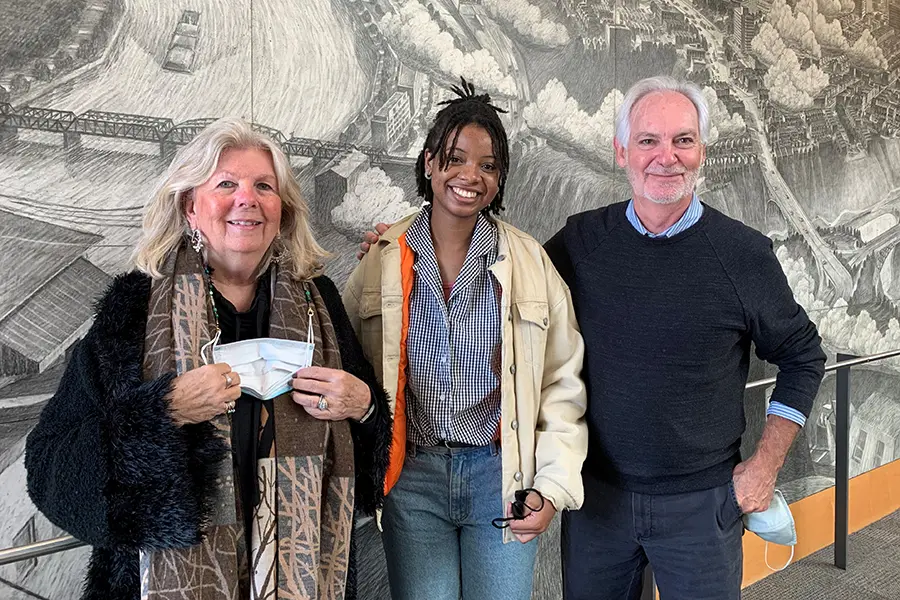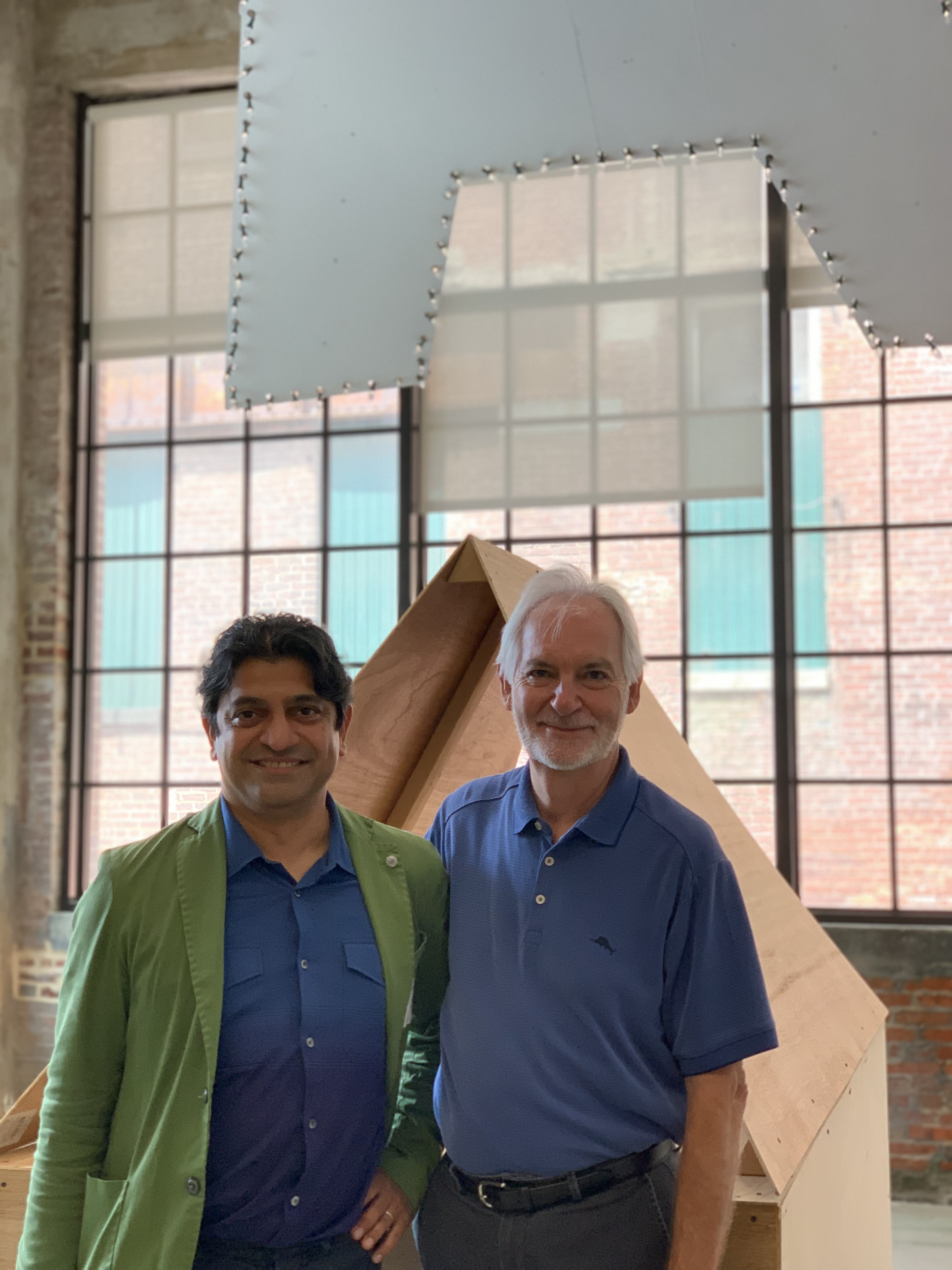
Building Fairness
Paul and Ria Jacob’s support constructs ‘scaffolding’ that equips School of Architecture students for success
By Lauren Sisco
Nearly 50 years after finishing their degrees, Paul and Ria Jacob still talk about their university experiences fondly — Ria at the Maryland Institute College of Art and Paul at Carnegie Mellon University’s College of Fine Arts.
“I was one of those crazy kids who knew I wanted to be an architect in third grade,” says Paul, who graduated in 1972 with a bachelor’s degree in architecture.
His time at CMU set him on a path to a successful career in architecture. Shortly after his retirement from RTKL Associates in Baltimore, Maryland, he joined the board of directors for the Baltimore Design School, which was founded as a “transformation school” for the city’s public school district in 2010.
“It is similar to a charter school but a bit more aligned with the city, and it focuses on helping students in overlooked communities to prepare for careers in graphic design, fashion design and architecture,” Paul says.
The school provides the support, programming and training that Paul and his peers benefited from in the past, but — as he quickly found out — were harder to come by for many Baltimore students.
“Over the first few years, I naively thought that their experience would be exactly like mine,” he says. “I had all the support systems needed to really skyrocket into a career in architecture. When I realized that many of these kids needed things I took for granted like a winter coat or lacked support at home, I knew we needed to look at approaching the students differently and more holistically.”
In 2020, Paul and Ria met Omar Khan, who had been newly appointed as head of the School of Architecture at Carnegie Mellon.
The couple knew they wanted to continue and deepen their connection to Paul’s alma mater and the timing of that introduction could not have been more ideal.
“Over the first few years, I naively thought that their experience would be exactly like mine. I had all the support systems needed to really skyrocket into a career in architecture. When I realized that many of these kids needed things I took for granted like a winter coat or lacked support at home, I knew we needed to look at approaching the students differently and more holistically.”
Paul Jacob (CFA 1972)
At CMU, Omar saw the need for what he calls “scaffolding” to help attract, encourage and engage under-resourced students.
“‘Scaffolding’ refers to curriculum supports that address issues of equity,” Omar says. “People are not equally prepared for the same curriculum, so sometimes a scaffold is a laptop, sometimes it’s an additional instructor or sometimes it’s a mentor who helps a student realize that they belong here.”
Paul, Ria and Omar worked together to translate what had been created in Baltimore at the middle and high school-levels and apply it to Omar’s vision for a more diverse and holistic architecture department at CMU. From that collaboration, the Jacob Family Endowed Fund for Diversity in Architecture was born and will serve as the foundation for critical scaffolding to be built.
The fund provides support that the School of Architecture can use now to jump start this effort with current students, and over the next few years, the couple will permanently endow the fund. With this two-pronged philanthropic strategy, opportunities for students will be supported in perpetuity.
For Ria, a major need at many universities is for the connections that students develop organically to grow into supportive programming that students can utilize for years to come.
“At lot of kids come to college and don’t see people like them or don’t have a big support system, so they don’t feel comfortable,” Ria says. “In many cases, students form groups of their own to talk about their experiences. But at some point, those students will move on, so you have to have a plan in place to maintain that level of support, so students feel confident — academically and personally — to stay in the program.”
Omar agrees with the need for support beyond the syllabus.
“These students are like family, and we need to do everything we can to make this work for each and every person,” Omar says. “We want all of our students to graduate from this program because we know they’re going to make a huge difference in this profession.’”
To evaluate the success of the fund, the measurements are simple: Are students staying, and are they thriving?
To Omar, the fund is already making an impact by providing hope and promise within the School of Architecture for a richer and more robust student experience.
“I couldn’t be happier about this partnership. It gives us all a tremendous amount of confidence as we look to the future.”
 Paul Jacob with Omar Khan, Professor and Head, School of Architecture
Paul Jacob with Omar Khan, Professor and Head, School of Architecture